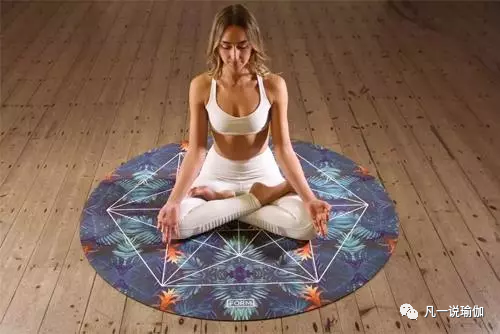
How to choose a suitable yoga mat for beginners?
Let's first talk about the characteristics of a yoga mat that is helpful for practice, and then talk about how to choose a yoga mat for beginners.
A good yoga mat has three characteristics. 1: Anti-slip. We all know that the foundation of yoga asanas is very important. The foundation should be stable and solid, and take root down wherever your hands and feet fall. If the mat is slippery, the foundation cannot be stabilized. Asanas like standing mountain pose may not be very obvious, but you feel more obvious when you do down-dog poses, war one, war two, and triangle poses. You will pay more attention to preventing your feet from shifting or slipping; it is possible that you will desperately grasp with your toes to prevent your feet from shifting; or your strength will not daring to take root down, resulting in Compensation through muscles or joints. These are not what we want to see. So anti-slip is the top priority. 2. The material is environmentally friendly and has no odor This is easy to understand. In yoga, many movements are performed by lying on the mat. Some asanas will make the tip of the nose, chin or forehead directly touch the mat. In addition, yoga asanas pay attention to breathing. For the time being, a mat with a peculiar smell is not environmentally friendly. Whether you can accept the smell or not, it is not good for our body. We are to detox, but not to smoke. 3. Good water absorption. Although not every time I practice, we will sweat profusely, but there are still sweating courses. If the mat cannot absorb the water quickly, it will affect our practice. These are the three most basic functions that I think a qualified yoga mat must have. Only with these three functions will it not affect our practice. For beginners, in addition to considering these three points, one more point should be added. 4. Moderate thickness. If you choose a yoga mat, you will find that the mat has different thicknesses. Beginners can choose a slightly thicker cushion. The main reason is to consider that there are many knee-to-ground movements in the asana, and a thicker one can protect the knee. Because the beginner's muscle strength is insufficient, or he can't activate the muscles, he may put his strength on the knee joint in the asana when he landed on the knee. A thicker cushion can play a good protective effect. Yoga mats on the market come in various thicknesses, 3 mm thinner, 6 mm thicker, and even 9 mm 10 mm mats. I personally recommend that beginners choose 6mm up and down. Too thick is not good, too thick will make it soft and collapse like a mattress, which is not good for us to practice. Finally, let me talk about the posture line on the yoga mat. The posture line does provide us with a lot of convenience. It is easier to judge whether it is balanced, whether it is in a straight line, how many angles, and so on. But I personally don't recommend using the position line, which will create laziness and dependence on our judgment. Of course, there are different opinions about the position line, this is just my personal suggestion, you can choose freely according to your own hobbies.
Melors (HK) Industry Co., Limited
TEL: 86-752-3553578
WEBSITE: www.melorsfoam.com



